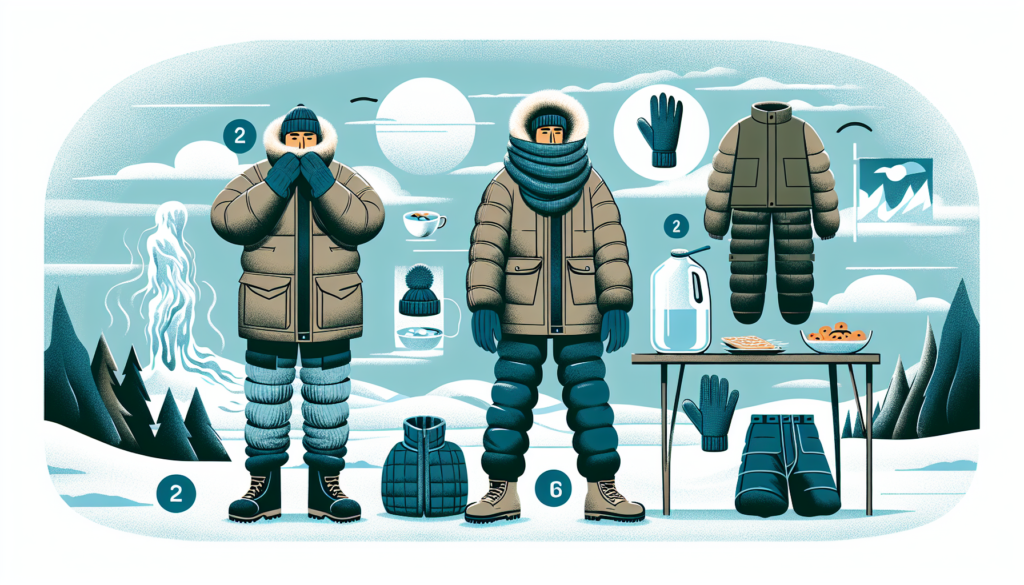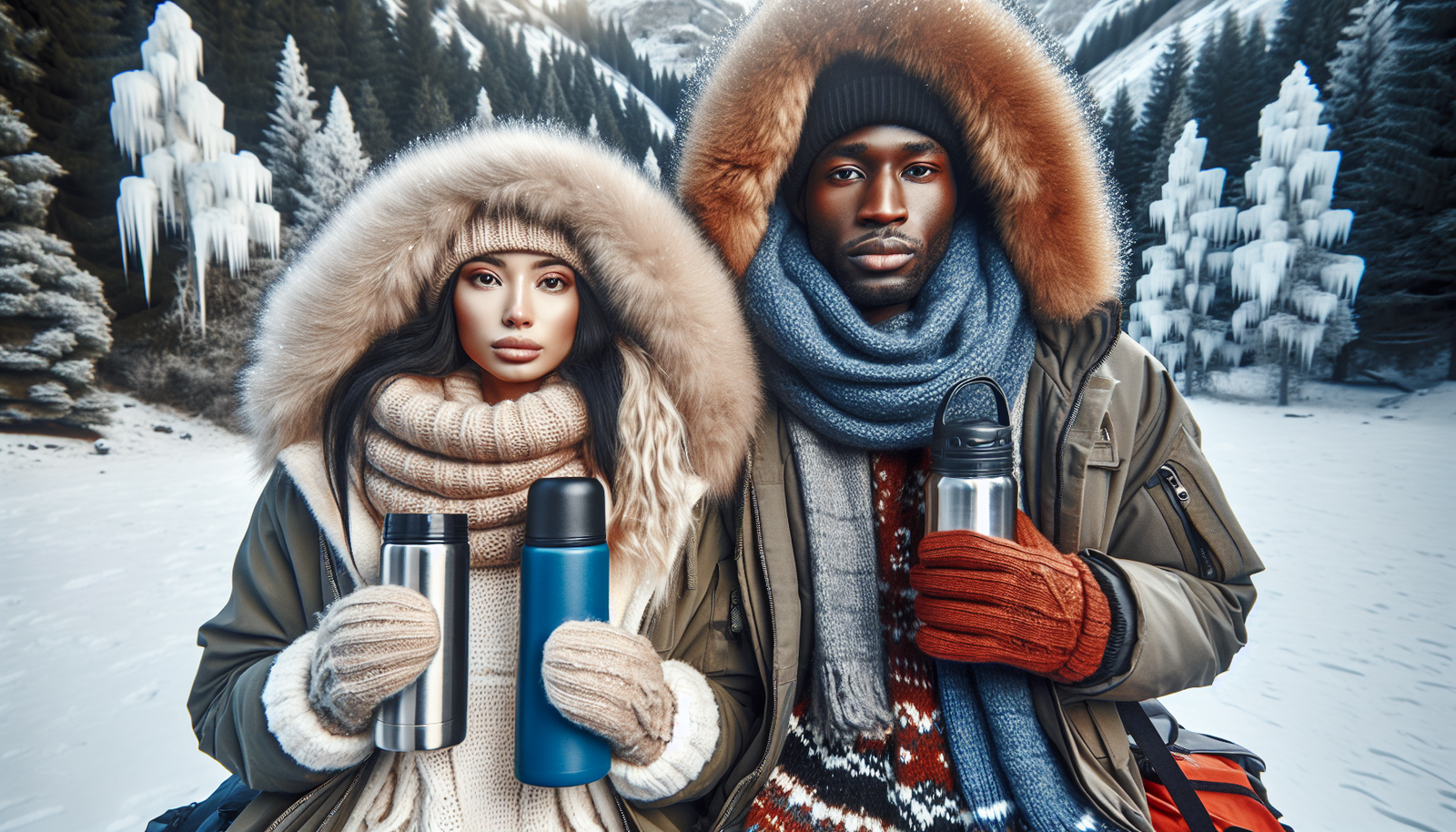When the cold weather hits, it’s important to stay warm and conserve energy to ensure your comfort and well-being. Whether you’re venturing out into the great outdoors or simply trying to stay cozy at home, these tips will help you brave the chill. From layering your clothing effectively to using insulated gear, there are plenty of ways to keep the cold at bay. And don’t worry, we’ve got you covered with ingenious techniques to trap body heat, fuel your internal furnace, and stay toasty in the coldest of temperatures. So, bundle up and get ready to conquer the cold with these handy tips for staying warm in cold weather.
Tips for Staying Warm in Cold Weather
In a world where unexpected situations can arise, mastering basic survival skills offers peace of mind and the potential to save lives. These keywords delve into the crucial knowledge needed to cope with emergencies, whether navigating the wilderness, facing urban disasters, or encountering life-threatening scenarios. They cater to diverse audiences, from curious beginners seeking introductory tips to adventurous souls preparing for extreme situations. With a focus on practicality, these keywords cover essential aspects like building shelters, finding water and food, staying warm, and signaling for help, empowering individuals to become self-reliant and resilient in the face of adversity. So, whether you’re seeking preparation for an outdoor adventure or simply want to feel equipped for life’s unpredictable twists, exploring these topics equips you with the know-how to overcome challenges and emerge stronger.
Choose the Right Clothing
Dress in layers
One of the most effective ways to stay warm in cold weather is to dress in layers. Layering allows you to adjust your clothing according to your body’s heat output and the outdoor temperature. Start with a moisture-wicking base layer made of materials like polyester or merino wool, which will keep sweat away from your skin. Over that, add an insulating layer, such as a fleece or down jacket. Finally, top it off with a windproof and waterproof outer shell to protect you from the elements. By adding or removing layers as needed, you can regulate your body temperature and stay comfortable in varying weather conditions.
Wear a hat
Heat escapes from the body through the head, so wearing a hat is essential for staying warm in cold weather. Choose a hat that covers your ears and is made of a material that provides insulation, such as wool or fleece. By keeping your head warm, you’ll prevent heat loss from one of the body’s most vulnerable areas.
Wear insulated and waterproof footwear
Your choice of footwear can make a significant difference in how warm and comfortable you feel in cold weather. Opt for insulated and waterproof boots that will keep your feet dry and protected from the cold. Look for boots with a good grip to prevent slipping on icy surfaces. Adding an extra layer of warmth by wearing insulated socks or using foot warmers can also help keep your feet cozy in frigid temperatures.
Protect Your Extremities
Wear gloves or mittens
Your hands are particularly vulnerable to cold temperatures, so it’s crucial to keep them well-insulated. Choose gloves or mittens that are designed for cold weather and provide adequate insulation. Mittens can be more effective in extreme cold as they allow your fingers to share body heat. Consider wearing liner gloves underneath for extra warmth. Additionally, look for gloves or mittens with touchscreen capability if you need to use your phone or other devices while outdoors.
Wear warm socks
Keeping your feet warm is essential for overall comfort in cold weather conditions. Invest in high-quality, insulated socks made from materials like wool or synthetic fibers that wick moisture away from your skin. Avoid wearing cotton socks as they tend to retain moisture, which can make your feet cold. Layering your socks with a moisture-wicking liner can provide additional insulation.
Use hand and foot warmers
Hand and foot warmers are small, portable heat sources that can be a lifesaver in extremely cold conditions. They work by producing heat when activated and can provide warmth for several hours. You can easily slip them into your gloves or boots to keep your hands and feet toasty. These are particularly useful if you’re planning on spending an extended period outdoors or engaging in activities like skiing or hiking.

Stay Active
Engage in physical activity
Staying active is an effective way to generate body heat and keep warm in cold weather. Engaging in activities like walking, jogging, or even doing jumping jacks can increase your heart rate and boost your body’s heat production. It’s important to dress appropriately for the activity, wearing breathable, moisture-wicking layers that allow for movement while still providing insulation.
Do exercises to generate body heat
In addition to regular physical activity, there are specific exercises you can do to generate body heat and warm up quickly. Some examples include jumping jacks, high knees, squats, or lunges. These exercises get your blood flowing and increase your body’s heat production. Incorporating a short warm-up routine before heading outdoors can help get your circulation going and keep you warm throughout the day.
Eat and Drink Warm Foods
Consume hot beverages and soups
Warm beverages like tea, coffee, or hot chocolate can provide a comforting warmth from the inside out. They can help raise your body temperature and keep you feeling cozy. Additionally, consuming warm soups or broths can provide a nutritious and warming meal option, keeping you satiated and warm during cold weather conditions.
Eat high-calorie, warm foods
In cold weather, your body burns more calories to keep warm. Consuming high-calorie foods can help replenish your energy levels and provide the fuel needed to stay warm. Opt for foods like nuts, seeds, whole grains, and protein-rich options like lean meats or legumes. These foods not only provide warmth but also offer important nutrients to support your overall well-being in colder temperatures.

Protect Your Head, Neck, and Face
Wear a scarf or neck gaiter
A scarf or neck gaiter can provide much-needed protection for your neck and prevent heat loss in cold weather. They act as an additional barrier against chilly air and can be easily adjusted to cover your face and mouth if needed. Choose a scarf or gaiter made of a warm and breathable material, like wool or fleece, to keep your neck and face cozy.
Cover your face with a mask or balaclava
In extremely cold or windy conditions, it may be necessary to cover your face to protect it from frostbite and prevent heat loss. A mask or balaclava made of a windproof material can help shield your face from the elements while still allowing you to breathe comfortably. Ensure that the eye area is also covered, or wear goggles for added protection against the cold.
Create a Warm Sleeping Environment
Use thermal and insulated sleeping gear
If you are spending time outdoors or camping in cold weather, having the right sleeping gear is crucial for a good night’s sleep and staying warm. Invest in a sleeping bag rated for low temperatures, preferably one that is waterproof and insulated. Additionally, use an insulated sleeping pad or mattress to provide a barrier between your body and the cold ground. Layering blankets or using a sleeping bag liner can add extra warmth for extremely cold nights.
Use hot water bottles or heating pads
To create a warm sleeping environment, consider using hot water bottles or heating pads. Fill a water bottle with hot water, seal it tightly, and place it in your sleeping bag near your feet or torso. Alternatively, heating pads designed for outdoor use can provide targeted warmth. Just ensure they are battery-powered and safe for use with sleeping gear. Adding these heat sources can make a significant difference in keeping you warm throughout the night.

Keep Your Living Space Insulated
Seal gaps and cracks in windows and doors
One way to conserve heat and stay warm indoors is to seal any gaps or cracks in windows and doors. Cold air can easily penetrate through these openings, making it challenging to maintain a comfortable temperature. Use weatherstripping or caulking to seal gaps and consider adding a door sweep to prevent drafts. Additionally, using window insulation film or thermal curtains can help retain heat and insulate your living space.
Use insulation on walls and floors
Improving the insulation in your living space can make a significant difference in maintaining warmth. Insulating walls and floors can help prevent heat loss and reduce the need for excess heating. Consider using insulation materials like fiberglass or foam insulation boards to improve the thermal efficiency of your home. This can help keep your living space comfortable and reduce energy costs during colder months.
Utilize Heating Devices
Use space heaters or radiators
During cold weather, space heaters or radiators can provide additional warmth and comfort indoors. Choose energy-efficient models and follow safety guidelines when operating them. Place heaters away from flammable materials, on a stable surface, and never leave them unattended. It’s important to remember that space heaters should not be used while you’re sleeping, so always turn them off before going to bed.
Invest in electric blankets or heating pads
For added warmth and coziness, invest in electric blankets or heating pads. These devices can provide targeted warmth and are especially useful for keeping your bed warm during cold nights. Ensure that the electric blanket or heating pad you choose has built-in safety features, such as automatic shut-off timers, to prevent overheating and reduce fire hazards. Follow manufacturer instructions for safe use.

Be Mindful of Your Body Position
Avoid sitting or lying on cold surfaces
When spending time outdoors in cold weather, it’s important to avoid sitting or lying directly on cold surfaces. Sitting or resting on the ground, snow, or cold metal can quickly draw heat away from your body and make you feel colder. Use a waterproof and insulated seat cushion or blanket to create a barrier between your body and the cold surface. This will help preserve your body heat and keep you more comfortable.
Keep your feet and hands elevated
Elevating your feet and hands can improve circulation and help prevent them from becoming cold. When sitting or resting, prop your feet up on a bag, backpack, or a cushioned surface. This will minimize heat loss from contact with cold surfaces. For your hands, tuck them under your armpits, inside your coat pockets, or wear hand warmers to maintain warmth and preserve dexterity.
Practice Proper Hygiene
Keep your body clean and dry
Maintaining good hygiene is essential for staying warm in cold weather. Wet or damp clothing can quickly lead to heat loss and discomfort. Change out of wet garments as soon as possible and dry yourself thoroughly before putting on fresh, dry clothing. Pay attention to areas prone to sweating, such as your underarms, groin, and feet, and keep them clean to prevent odor and potential skin issues.
Change into dry clothes if they become damp
If your clothing becomes damp from sweat or moisture, it’s important to change into dry clothes promptly. Wet clothing can quickly draw heat away from your body, leading to chilling and potentially hypothermia. Carry extra layers and, if possible, spare sets of clothing to ensure you have dry options available. By changing into dry clothes, you’ll be able to maintain your body’s warmth and stay comfortable in cold weather.
Remember, staying warm in cold weather is essential for your comfort and safety. By following these tips and taking the necessary precautions, you can enjoy outdoor activities or navigate cold climates with confidence. Stay prepared, dress appropriately, and prioritize maintaining body heat to make the most of your cold weather experiences.


